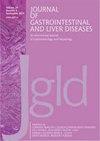A Novel Non-slip Banded Balloon Catheter for Endoscopic Papillary Balloon Dilation.
IF 2
4区 医学
Q3 GASTROENTEROLOGY & HEPATOLOGY
引用次数: 0
Abstract
Endoscopic papillary balloon dilation (EPBD) is an essential and established procedure for treating bile duct stones [1-3] and is especially useful over endoscopic sphincterotomy in cases involving antithrombotic agent use. A variety of EPBD balloons (length range, 30–50 mm) are currently available. However, balloon slips are often a problem interprocedurally as they require several re-expansions, resulting in unnecessary expansion and adverse events. This is especially likely to occur with shorter-length balloons. In contrast, in some cases, there is insufficient distance from the papilla and scope, or the stones are located near the papilla, such as in multiple stone accumulation cases. Endoscopic papillary balloon dilation is difficult to manage in these cases, particularly using longlength balloons. To overcome these challenges, a novel balloon catheter (RIGEL Balloon Dilatation Catheter; Japan Lifeline Co., Ltd., Tokyo, Japan) with a very short length of 15 mm and preventive function for slippage, has been developed. A 5 mm ductile band is equipped in the center of the balloon and detects delayed expansion of the central portion, leading to slippage prevention (Fig. 1). An 83-year-old man, who was using antithrombotic agents, developed obstructive jaundice with cholangitis due to choledocholithiasis. Urgent endoscopic retrograde cholangiography was performed, and biliary canulation was achieved using a wire-guided method. An 8 mm diameter novel balloon was inserted over the guidewire, and the band was located at the papilla. Then, the balloon was gradually inflated to 8 atm, with delayed expansion of the central part (Fig. 2). Full expansion was achieved without slippage (Fig. 3). After EPBD, the bile duct stone was completely removed using a retrieval basket catheter. The patient’s symptoms were improved rapidly without any adverse events. Our balloon offers a new device option for EPBD. The short balloon length and strong non-slip function simplify procedures without added disadvantages.一种用于内镜下乳头状球囊扩张的新型防滑带状球囊导管。
本文章由计算机程序翻译,如有差异,请以英文原文为准。
求助全文
约1分钟内获得全文
求助全文
来源期刊
CiteScore
3.20
自引率
0.00%
发文量
61
审稿时长
6-12 weeks
期刊介绍:
The Journal of Gastrointestinal and Liver Diseases (formerly Romanian Journal of Gastroenterology) publishes papers reporting original clinical and scientific research, which are of a high standard and which contribute to the advancement of knowledge in the field of gastroenterology and hepatology. The field comprises prevention, diagnosis and management of gastrointestinal and hepatobiliary disorders, as well as related molecular genetics, pathophysiology, and epidemiology. The journal also publishes reviews, editorials and short communications on those specific topics. Case reports will be accepted if of great interest and well investigated.

 求助内容:
求助内容: 应助结果提醒方式:
应助结果提醒方式:


